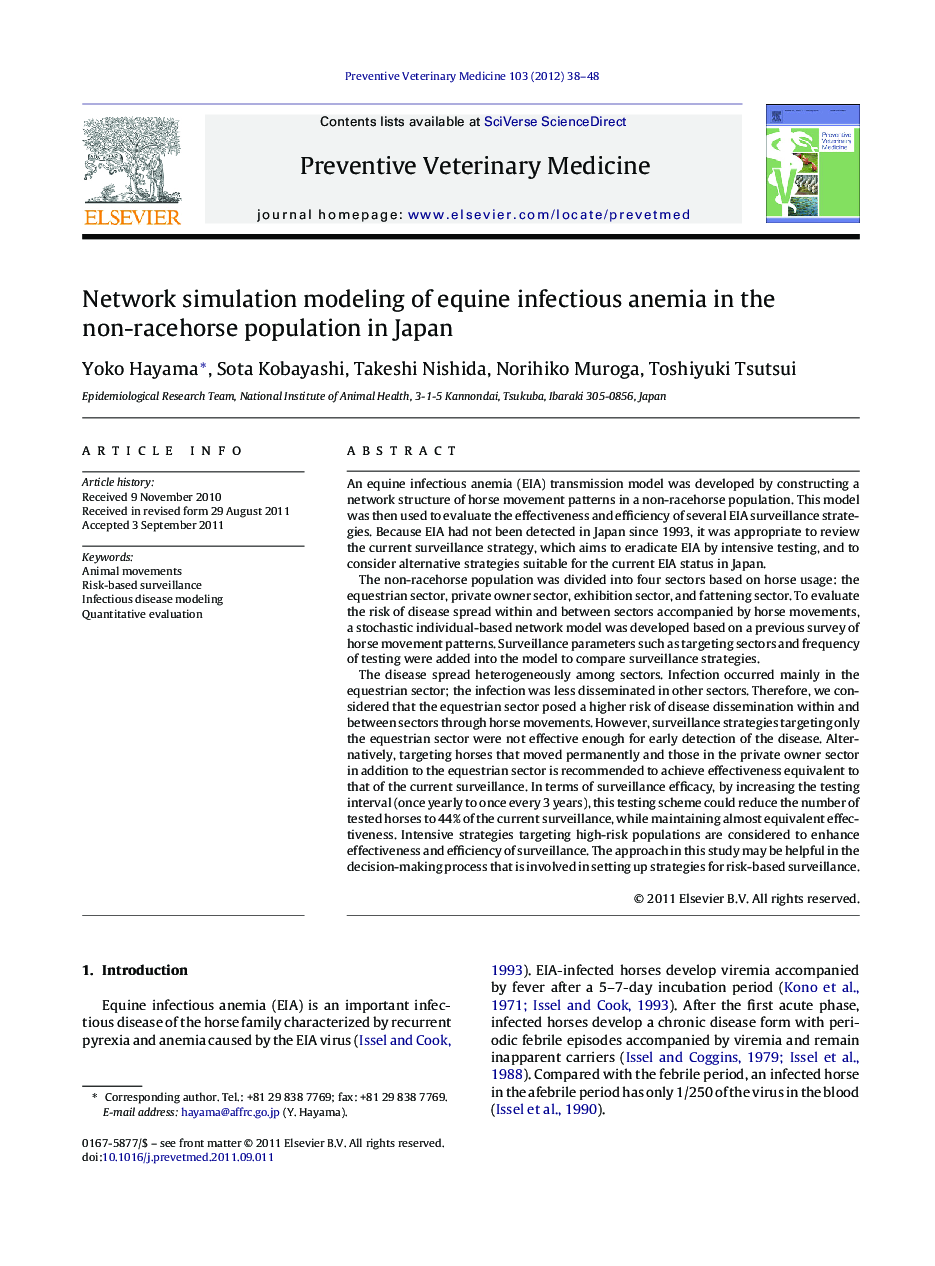| Article ID | Journal | Published Year | Pages | File Type |
|---|---|---|---|---|
| 5794106 | Preventive Veterinary Medicine | 2012 | 11 Pages |
Abstract
The disease spread heterogeneously among sectors. Infection occurred mainly in the equestrian sector; the infection was less disseminated in other sectors. Therefore, we considered that the equestrian sector posed a higher risk of disease dissemination within and between sectors through horse movements. However, surveillance strategies targeting only the equestrian sector were not effective enough for early detection of the disease. Alternatively, targeting horses that moved permanently and those in the private owner sector in addition to the equestrian sector is recommended to achieve effectiveness equivalent to that of the current surveillance. In terms of surveillance efficacy, by increasing the testing interval (once yearly to once every 3 years), this testing scheme could reduce the number of tested horses to 44% of the current surveillance, while maintaining almost equivalent effectiveness. Intensive strategies targeting high-risk populations are considered to enhance effectiveness and efficiency of surveillance. The approach in this study may be helpful in the decision-making process that is involved in setting up strategies for risk-based surveillance.
Related Topics
Life Sciences
Agricultural and Biological Sciences
Animal Science and Zoology
Authors
Yoko Hayama, Sota Kobayashi, Takeshi Nishida, Norihiko Muroga, Toshiyuki Tsutsui,
